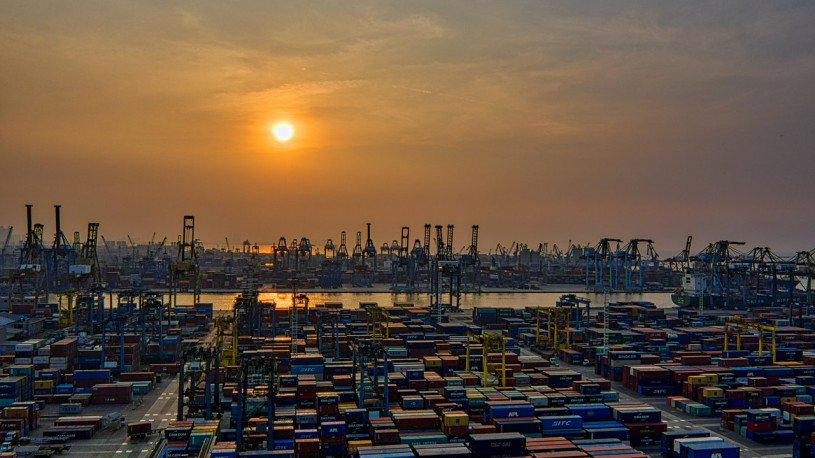-
Accessing South African Industrial Chemicals: Part 2 The Present
 Continue Reading
Continue ReadingToday, the South African chemicals industry is still heavily dependent on coal for both energy and raw material supplies. It has few major raw material deposits or access to ores and rare earth minerals, except for its huge gold and diamond deposit
This general lack of supply makes the industry reliant on imports for production, whilst its coal reserves have also developed the industry in a specific way. A fact noted by Thokozani Majozi of the University of Witwatersrand, Johannesburg, who says, “The abundance of coal in South Africa – 92% of the coal consumed on the African continent is produced in South Africa – has fostered an economy largely dependent on this fossil fuel. The petrochemicals sector in South Africa is built on coal gasification. Additionally, more than 95% of South Africa’s electricity is generated by burning coal.”
He continues by noting the importance of petrochemicals in the industry, stating, “In South Africa, petrochemicals comprise about 55% of all chemicals produced.”
Such a reliance on one source of material for energy and chemical material may be a cause for concern, but perhaps more worryingly, in the modern world, is its distance from major markets. South Africa is a long way from America, Europe and the Far East, whilst its neighbours are poor, with largely underdeveloped economies. Whilst this does mean that the country is in a position of production leader in Africa, currently its producers are reliant on domestic demand to maintain growth.
Recently, this has caused negative expansion, as home markets have stuttered. As a report by industry research specialists, BMI Research states, “The South African petrochemicals industry is in recession and it could take at least two years before returning to growth. Key petrochemicals sectors are flat lining in a difficult operating environment. The sector is the worst affected area of an economy that is enduring sub-2% growth and falling competitiveness.” The report continues to outline the severity of the decline, which has hit rubber and plastic production particularly hard. “In the January-May period of 2015, basic chemicals declined by 1.8% year-on-year, while plastic fell 3.8% and rubber declined 7.1%. The decline in plastic and rubber output came after a poor 2014 when the rubber index fell 6.9% and plastic fell 3.1%. The factors causing the decline include poor domestic market performance, lower international petrochemicals prices and rising costs of inputs, including raw materials and labour”.
Despite these problems, there is still a thriving industry with a diverse range of production, as this chart produced by South Africa’s Small Enterprise Development Agency showing percentage share of chemicals production by sector in 2011 shows.
These statistics are supported by South Africa’s own Ministry of Trade and Industry, which noted in a recent report that, “The synthetic coal and natural gas-based liquid fuels and petrochemicals industry is prominent, with South Africa being the world leader in coal-based synthesis and gas-to-liquids technologies.” The report then goes on to highlight a problem facing the industry as a whole, as it states that, “The South African chemicals sector has two noticeable characteristics. Firstly, while its upstream sector is concentrated and well developed, the downstream sector – although diverse – remains underdeveloped.”
Much of this underdevelopment is caused by limited funding for research. The government has many social problems to overcome to develop the country as a whole. Years of racial segregation placed many on the poverty line, with slum dwelling and poor education and health care. Whilst the nations limited financial resources focus on returning a balance to everyday standards, there is little money left to fund advanced product development. Instead, it is left to multinational corporations to establish the nation’s intellectual competitive advantage.
However, as Dilshaad Booley, Chemicals Industry Research Specialist at Frost & Sullivan notes, foreign companies are not always willing to develop products for a country’s benefit. She writes, “Currently, there are limited research and development activities in the local [South African] chemicals industry. [Instead] technological advances are primarily driven by multinational corporations that want to maintain their global brand image and standards, which results in these corporations adopting foreign technologies, thereby advancing the local chemicals manufacturing sector.”
Worse still, Booley continues by noting the sluggish growth in the South African economy and the knock on effect this is having on chemicals industry expansion. “The South African chemicals industry offers major input materials, such as solvents and polymers, to the manufacturing sector. But as there has been slow growth over the past two years, the sector is expected to continue being a slow-growth market for the chemicals industry.”
Whether the South African chemicals industry can recover without a dramatic increase in domestic demand is hard to tell. But if local demand does not recover, then the industry must surely look to export, if it is to survive. But what competitive international advantages does the industry have to expand its export market?
-
Accessing South African Industrial Chemicals: Part 1 The Past
 Continue Reading
Continue ReadingSouth Africa has had a chequered history; centuries of underdevelopment, followed by massive economic changes and religious division in the mid-19th century, a gold rush, a civil war and years of isolation due to apartheid.
It has not been an easy journey for the nation, and this has had an impact on economic development there.
With regards to the chemicals industry, it is interesting to note that its diamond and gold industry became a driving force in chemical production speciality. As Prof. Thokozani Majozi of the University of Witwatersrand, Johannesburg notes, “South Africa’s desire to exploit opportunities provided by the mining of diamonds and gold necessitated the emergence of a strong and highly diversified industrial sector. Sustained access to those minerals demanded the establishment of an explosives industry, which was soon followed by a chlor-alkali industry and industrial specialty in fine chemicals sectors.”
Even the government’s own Ministry of Trade and Industry reports on the impact that the country’s history has had on the industry, commenting on how trade embargoes caused by apartheid led the chemicals industry to develop with only domestic markets in mind. In a recent report the Ministry states that, “The chemicals industry has been shaped by the political and regulatory environment that created a philosophy of isolationism and protectionism during the apartheid years. This tended to foster an inward approach and a focus on import replacement in the local market. It also encouraged the building of small-scale plants with capacities geared to local demand, which tended to be uneconomic.”
However, this is not to undermine the importance of the chemicals industry to the country and to the continental economy as a whole. As the Chemical and Allied Industries’ Association says, “The chemicals industry is a key sector of the South African economy. It accounts for about 25% of the nation’s manufacturing sales and is the most developed of its kind in Africa.”
However, despite the clear importance of the chemicals industry to the nation’s economy and its dominance on the continent, South African chemical production is still relatively underdeveloped. As a recent report by Dilshaad Booley at global consultants Frost & Sullivan confirms, “Despite South Africa having the largest and most sophisticated chemicals industry in Africa, estimated at $30 billion, it only contributes about 1% to the global market.”
With such a small impact on global chemical production, and such a challenging history, can South Africa ever become a major player?
-
The Indian Specialty Chemicals Market: Part 7 Conclusion
 Continue Reading
Continue ReadingDespite the challenges of infrastructure and the pace of development in competitors, India still has a good base for growth. Its population has a cultural desire to be educated, it has an enormous home market for end use chemical products and it has a strong banking sector and access to research funds from both domestic and foreign markets.
The investment in research has been observed by Samit Jain, Director at Pluss Polymers, first hand. He says, “Spending in innovation and R&D has increased dramatically. Venture capital firms are looking beyond the conventional domains of e-commerce, internet and service based companies to fund product developments. Perhaps this explains why Tata Capital Innovation Funds has funded Pluss Polymers with $1.33 million to develop specialty chemicals and polymeric additives.”
He continues by noting how the growth in domestic markets for specialty chemicals is being spurred by growth in the consumables market, and how the growth of the Indian middle class is supporting Indian chemicals expansion. He says, “[The growth] is primarily because of the increased sales in the consumer electronics and automotive segments. In the last few years, a lot of focus has been seen in the R&D sector. Several research institutes, national laboratories like NCL [the National Chemical Laboratory in Pune] and private sector companies are focusing on developing specialty chemicals and polymeric additives for the automotive, textiles, packaging and other end user segments.”
This is a view supported by Manish Panchal, Practice Head – Chemical and Energy at Tata, who notes that, “Higher disposable incomes are fuelling the growth of end-user industries. As a result, the chemicals industry is expected to grow at 13 – 17% over the next five years.”
Kumar Kandaswamy, senior director, Deloitte Touche Tohmatsu India, also believes that the growth targets can be achieved. His research projects specialty chemicals industry growth of 14% over the next five years, and believes much of this growth has been aided by macro-economic trends.
Sunil Jain, Head of Equity Research at Nirmal Bang Securities concurs, stating that, “In the last few months, depreciation of the Rupee, appreciation of the Yuan and an increase in the cost of production in China have helped Indian specialty chemical companies to garner more market share, both in domestic and international markets. I feel specialty chemicals firms are likely to continue outperforming in the next one year.”
Overall, there are a multitude of possibilities for trade and growth in Indian specialty chemicals. Whilst it may already be behind China and other developing Asian producers in terms of production capabilities, and its infrastructure needs an overhaul, it has a market that needs product. India has a youthful, aspiring 1.2 billion people who are hungry for the products of the modern world. All of these products require chemicals, and as the products of the future are increasingly specialised, the chemicals that they require will also specialised.
Its business friendly government and the funds that it has (both foreign and domestic) to support chemicals research and product development, will ensure that India will be a strong player in global chemical supply. For the chemicals trader looking to India, the opportunities are there.
